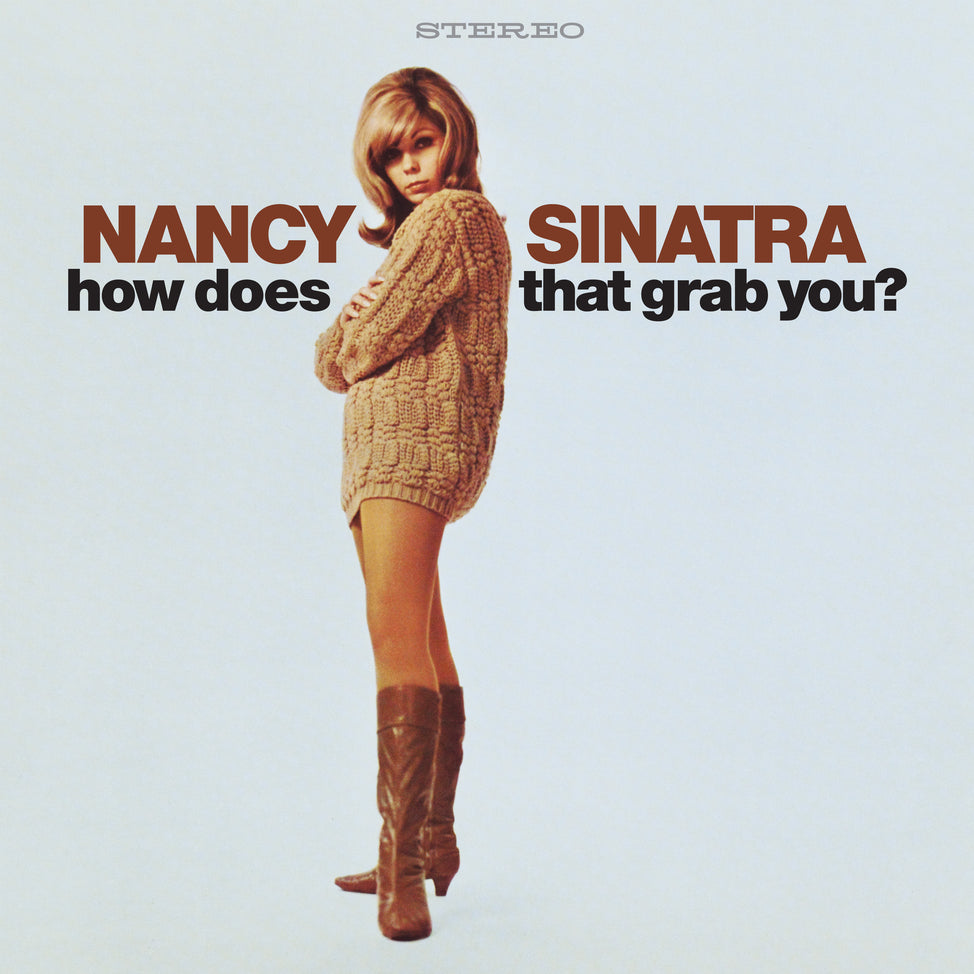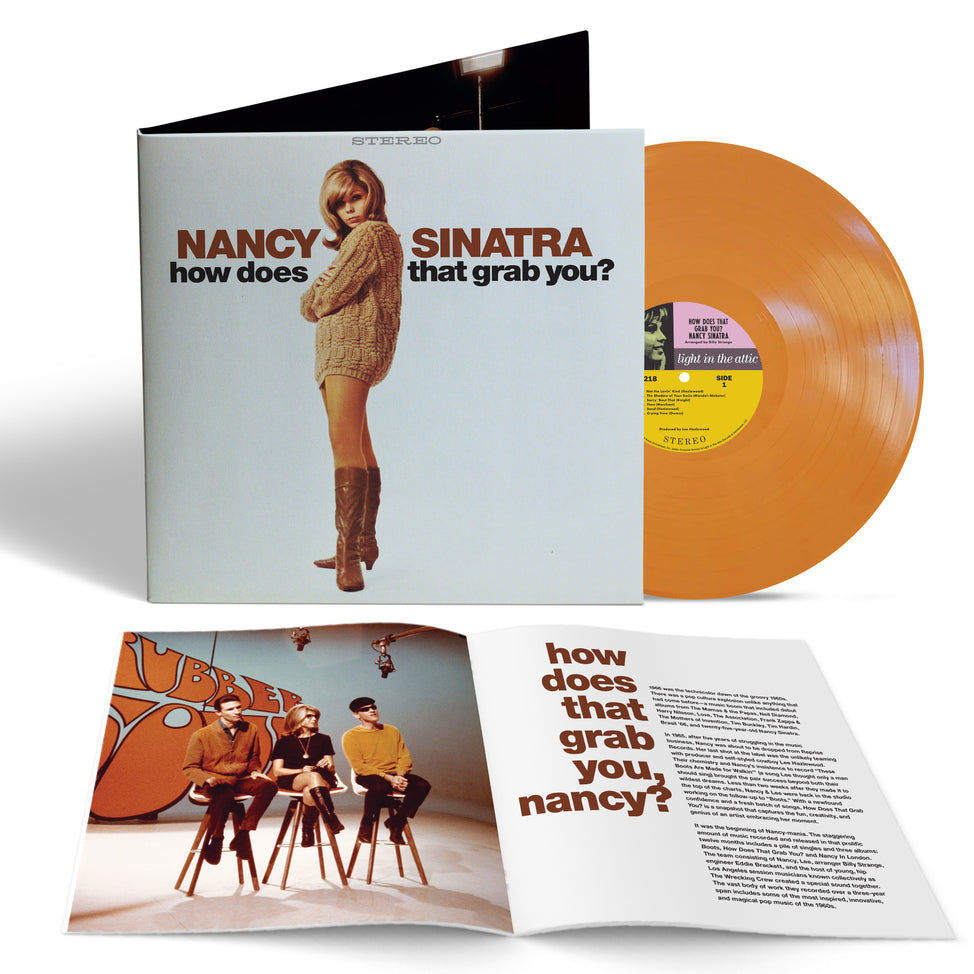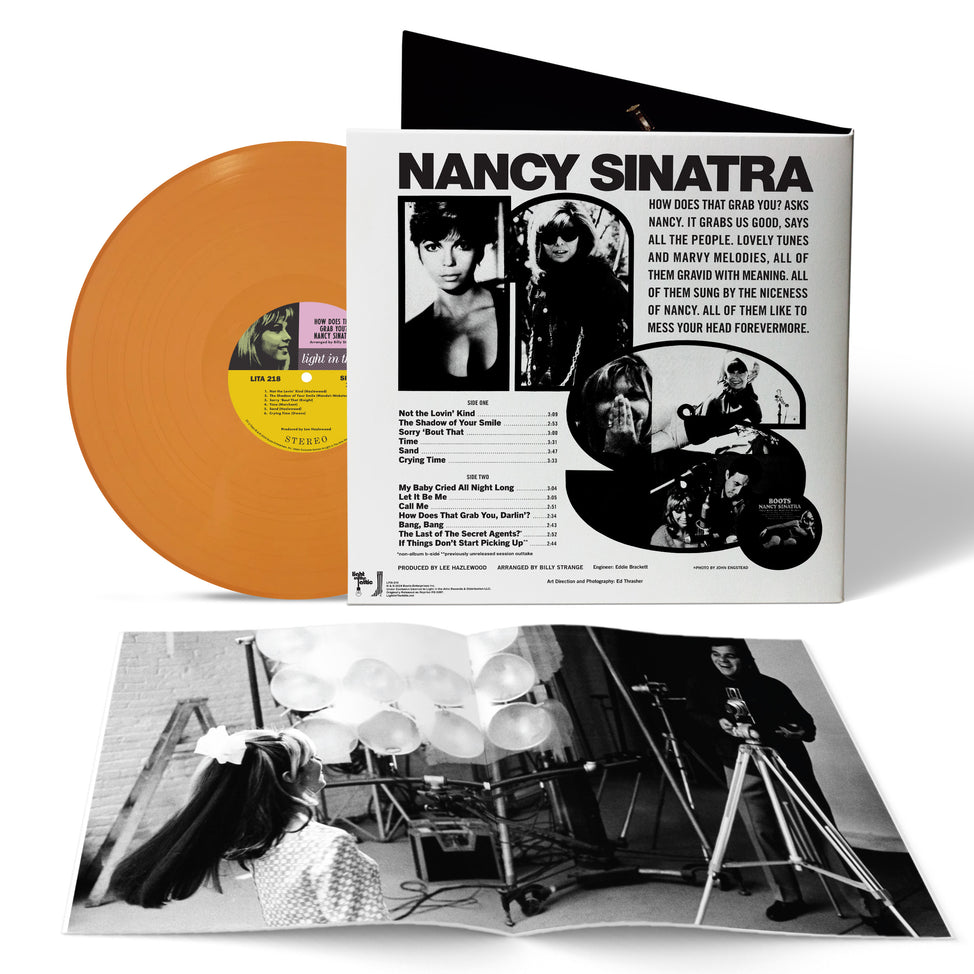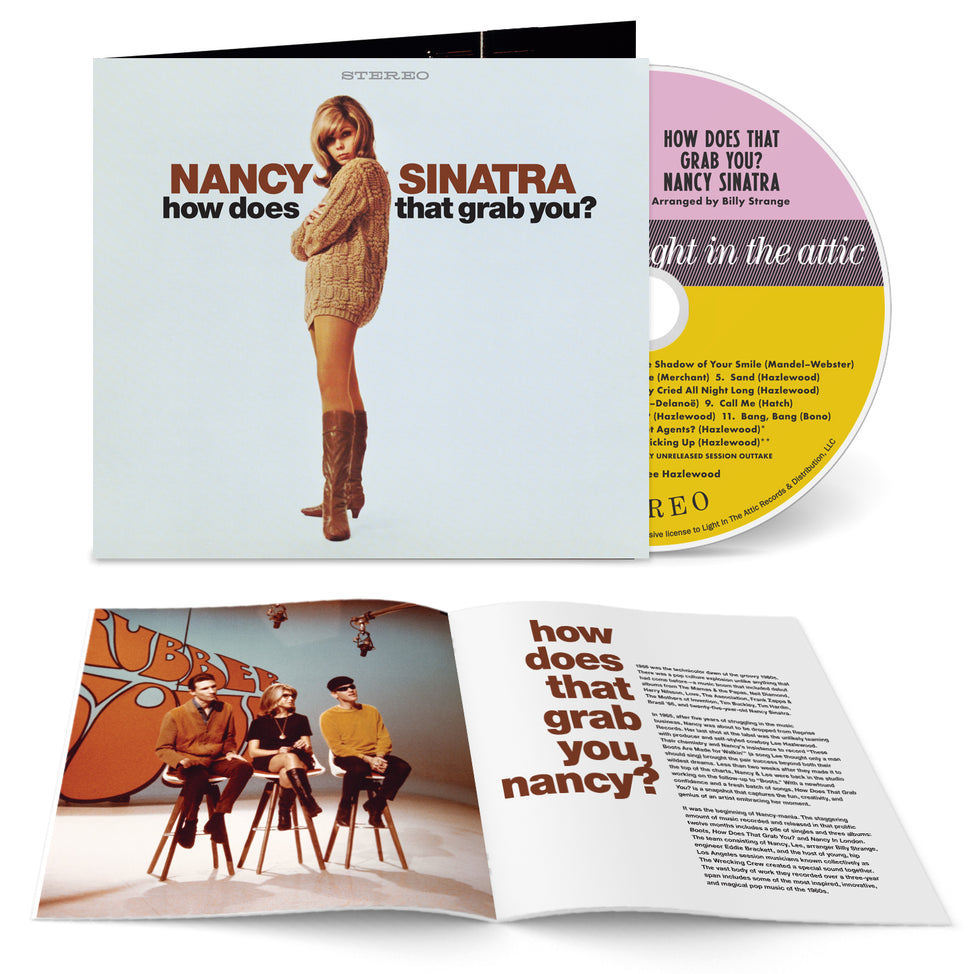Equal parts strong, sultry, and savvy, Nancy Sinatra has long been ahead of her time – both in her choices as an artist and as a businesswoman. Unapologetically, she established her own path early on and paved the way for decades of female artists to come, all while firmly maintaining control over her career, her image, and her music.
As the eldest daughter of Frank Sinatra, Nancy was born into the spotlight. At 19, she made her professional debut in front of millions of Americans, appearing alongside her father and Elvis Presley on the television special Welcome Home Elvis. Not long after, she released a series of singles. But those demure recordings didn’t reflect the real Nancy Sinatra – that Nancy would be re-introduced to the world just a few years later, thanks to an unlikely musical partnership with songwriter and producer Lee Hazlewood. When the two artists had their initial meeting in 1964, Sinatra was newly-divorced and struggling to score a hit record amid the changing musical landscape. At the urging of her label, she met with Hazlewood – a 36-year-old songsmith from Oklahoma who had found success writing for guitarist Duane Eddy. Hazlewood auditioned material for Sinatra, including a song called “These Boots Are Made for Walkin’,” which he originally intended to record himself.
Sinatra, however, saw the song in a different light. Nancy “understood that a man brazenly chastising his partner for her misbehavior and threatening retribution… was too ugly and portentous for pop radio. When a woman performed the track – and Sinatra sang it with a kind of playful, admonishing growl – it became an empowerment anthem, promising dignity and control in the face of betrayal. There’s something nearly flirtatious in her delivery: you’re trouble, but I’m trouble, too. Somehow, she made ‘Boots’ radical.” With Hazlewood as producer, Sinatra went into the studio with Billy Strange and other members of the legendary Wrecking Crew to record the song – along with a handful of pop covers and originals – for her debut album, Boots. Gone was the prim brunette singer, and in her place was a confident, fashion-forward new star with a commanding contralto voice and eye-catching platinum hair. Released in 1966, Boots was a Top 5 album, thanks to its brazen title track. Sinatra scored a No.1 hit on both sides of the Atlantic with “These Boots are Made for Walkin’,” which earned three GRAMMY® nominations and sold over a million copies of the single. As a testament to its enduring, multi-generational appeal, “Boots” has inspired countless covers throughout the decades, including those by Loretta Lynn, Kacey Musgraves, Billy Ray Cyrus, and Jessica Simpson.
While “Boots” became Sinatra’s signature song, she and Hazlewood were just at the beginning of their creative journey. Soon, they returned to the studio, notching two more Top Ten hits with “Sugar Town” and “How Does That Grab You, Darlin?”, and recorded their first of many duets, titled “Sand,” for Sinatra’s sophomore effort How Does That Grab You? (1966), which also featured a cover of the Sonny Bono-penned tune “Bang Bang (My Baby Shot Me Down)” ─ a breakthrough hit for Cher earlier that year. Accompanied only by Billy Strange on guitar, Sinatra’s sparse rendition stood in stark contrast to Cher’s orchestrated arrangement. Decades later, the haunting recording gained a new legion of fans when it appeared in the opening credits of Quentin Tarantino’s 2003 film, Kill Bill Volume 1. As Sinatra’s star continued to rise, she was tapped to perform the theme song to the 1967 James Bond film, You Only Live Twice. A rare honor, Sinatra traveled to London for the session, where she worked with film composer John Barry. Not long after, she recorded a stripped-down, single version of the song with Hazlewood.









